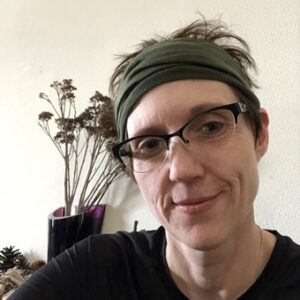
Stephanie Morrissette
Stephanie is an avid naturalist and a Library Assistant in the Adult Services Department at CDPL.
Did you know that there is an owl that makes a call that sounds like the words “who cooks for you?” Do you know what owl it is? If you said Barred Owl, you are right! You are well on your way to identifying a major owl species in Indiana.
If you would love to learn more about local owls, join us for our Owls of Indiana program on Saturday, October 19th at 10:00 am in Meeting Room A of the Crawfordsville District Public Library. This program is part of our Library Naturalist series and will include a history of owls, types of owls, multiple identification characteristics, as well as mating protocol, habitat, vocalizations, and even diet.
To make it even more interesting, after the program, we will dissect owl pellets to determine the diet of Barn Owls. What is an owl pellet you ask? They are the regurgitated remains of what owls eat. The feathers, bones, and other hard parts that owls cannot process through their digestive tracts are expelled as a “pellet”. We can determine what kinds of animals have been eaten! We will have owl pellets and dissection kits available on a first-come first-serve basis. The pellets are heat sterilized and individually wrapped.
Owls have a long history in mythology as being not only protectors for soldiers on the battlefield but also a good omen for victory at war. The owl has been used on coinage, for payment of goods and services in early civilizations. But the owl is also known as a portent of death and evil in some cultures; yet still, the English thought cooked owl eggs that were ingested would yield better night vision to those who ate them, and even early Indigenous peoples of the Americas believed owls were good spirit totem animals that brought messages from the dead. In more modern times, the owl has been used in popular commercials, such as the Tootsie Pop’s Mr. Owl, and the “Give a Hoot, Don’t Pollute!” campaign of Woodsy Owl circa 1977 with the US Forest Service. Owls are also very popular in literature. One name says it all: Harry Potter. Ask any youth and you will learn the association of owls with magic and wizardry (check out our Harry Potter series in the Youth Services department).
What more do we want to know about owls? For books on owls, we have several selections in our nonfiction collection. “Owls: Their History and Unnatural History” by John Sparks (598.97 Spa), “The Wise Hours: A Journey into the Wild and Secret World of Owls” by Miriam Darlington (598.9 Dar), “Owls: A Year in the Lives of North American Owls” by Paul Bannick (598.97 Ban), and “What an Owl Knows” by Jennifer Ackerman (598.9 Ack) are all books that I highly recommend if you love everything owls! Additionally, we have “Wesley the Owl: The Remarkable Love Story of an Owl and His Girl” by Stacey O’Brien (598.97 O’Br), which is a fascinating look into animal intelligence and the bonds we create with animals.
We hope you join us for this session of our Library Naturalist series. The Owls of Indiana program is sure to be a hoot! If you have questions on the program or owls, contact our Adult Services Reference desk at 765-362-2242, ext. 3 to speak with the library naturalist or email preguntar@cdpl.lib.in.us.
